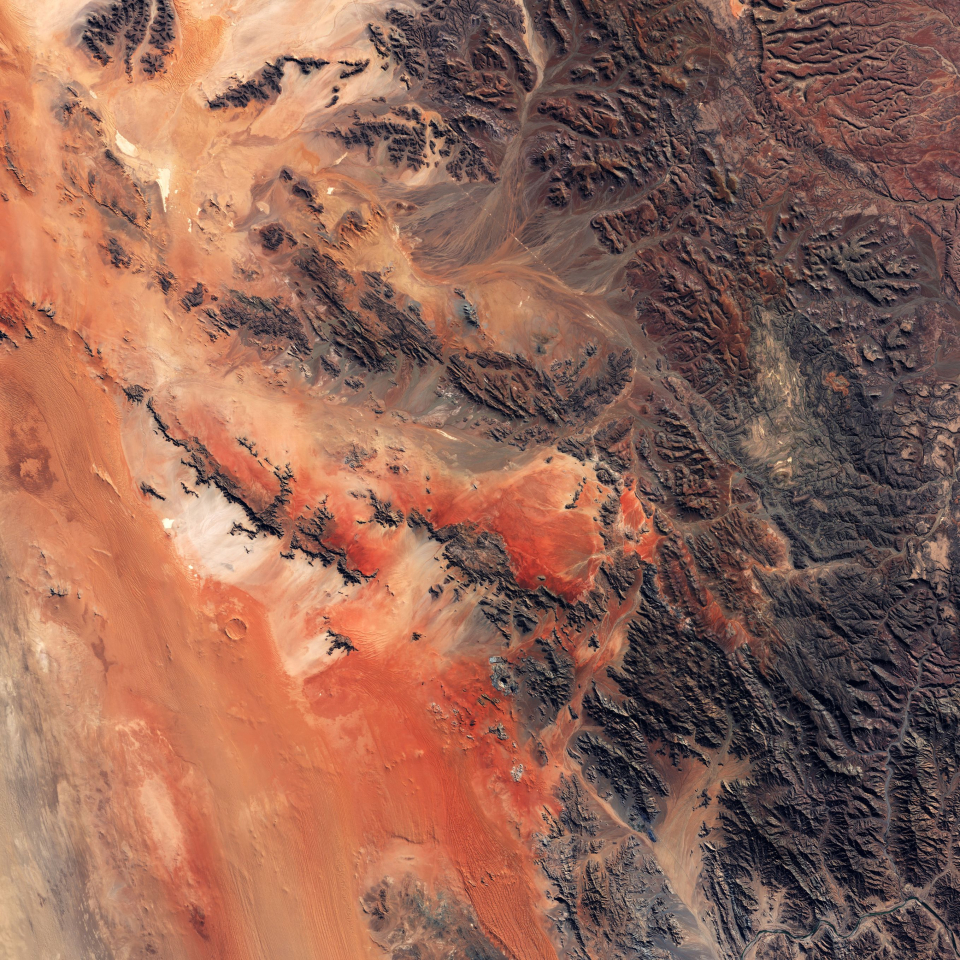Published on 16 July 2023
The Roter Kamm impact crater is located in the Tsau ǁKhaeb National Park, also known as the Sperrgebiet, a diamond mining area in the Namib Desert, in southwest Namibia. According to geologists, the crater was formed by a meteorite around the size of a large vehicle that collided with Earth approximately 5 million years ago.
The crater has a diameter of 2.5 km and is around 130 m deep. It is clearly visible in the midst of the rust-red dunes, with its rims rising some 40 to 90 m above the surrounding plain. Its floors are covered by sand deposits at least 100 m thick.
Meteorites and asteroids have influenced Earth’s development, as seen by the millions of impact craters scarring our world. Each year on 30 June, the worldwide UN-sanctioned Asteroid Day takes place to raise awareness about asteroids and what can be done to protect Earth from possible impact. The day falls on the anniversary of the Tunguska event that took place on 30 June 1908 in Siberia, the most harmful known asteroid related event in recent history.
Over the last two decades, the European Space Agency (ESA) has been performing detection and analysis of asteroids whose orbits bring them close to Earth, known as near-Earth objects (NEOs). There are an estimated 40,000,000 NEOs out there larger than 10 m – the threshold above which damage on the ground could happen.
ESA is also developing the Hera mission, which will be the first to test the effectiveness of asteroid deflection, as it flies to the Didymos binary system that will soon be impacted by NASA’s DART. If an asteroid is detected that is on collision course with Earth, these missions mean we will be more prepared to act.
ESA’s Asteroid Day programme is available in six languages, all available to replay.
Source:
European Space Agency. (2020, June 30). Roter Kamm impact crater. Observing the Earth.
